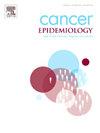Uncovering the possible link between dietary advanced glycation end products and mortality risk: A systematic review and meta-analysis
IF 2.4
3区 医学
Q3 ONCOLOGY
引用次数: 0
Abstract
Background
Recently, observational studies have focused on dietary advanced glycation end products (dAGEs) as predictive risk factors for chronic diseases and their related mortality. The current systematic review and meta-analysis aimed to synthesize the available evidence and quantify the possible association of dAGEs and risk of all-cause or cause-specific mortality.
Methods
A comprehensive and systematic search was conducted in online literature databases, including PubMed, Scopus and Web of Science until January 2025 without any language limitation. The hazard ratio (HR) with 95 % confidence interval (CI) for the included studies were extracted and converted into log HR. Also, we used a random-effects model with inverse variance weighting method to compute the pooled effect size.
Results
Six eligible studies (including 18 reports) were included in the current meta-analysis. 111,543 participants, aged 45.6–79 years old, participated in these observational studies, and the duration of follow-up varied from 3.8 to 16 years. According to the pooled results of our analysis, no significant association was observed between dAGEs and its components with the risk of all-cause mortality (HR=1.02; 95 %CI=0.92, 1.13; I2= 73.2 %), cancer mortality (HR=1.00; 95 %CI=0.88, 1.13; I2= 41.0 %) and CVDs mortality (HR=1.16; 95 %CI=0.86, 1.55; I2=86.1 %). Sex, target population, dAGEs components, region, dAGEs assessment method, and dietary data collection methods were the sources of heterogeneity.
Conclusions
In conclusion, our study suggested that there was no significant association between dAGEs intake and all-cause or cause-specific mortality.
揭示饮食晚期糖基化终产物与死亡风险之间的可能联系:一项系统综述和荟萃分析
最近,观察性研究集中在饮食晚期糖基化终产物(dAGEs)作为慢性疾病及其相关死亡率的预测危险因素。当前的系统综述和荟萃分析旨在综合现有证据,量化ages与全因或特定原因死亡风险之间可能存在的关联。方法截至2025年1月,在PubMed、Scopus、Web of Science等网络文献数据库中进行全面、系统的检索,不受语言限制。提取纳入研究的风险比(HR),可信区间(CI)为95 %,并转换为log HR。此外,我们使用随机效应模型与反方差加权法来计算合并效应大小。结果本次meta分析纳入了6项符合条件的研究(包括18篇报道)。111,543名参与者,年龄45.6-79岁,参与了这些观察性研究,随访时间从3.8年到16年不等。根据我们的综合分析结果,dAGEs及其组成部分与全因死亡风险无显著相关性(HR=1.02;95年 % CI = 0.92, 1.13;I2= 73.2 %),癌症死亡率(HR=1.00;95年 % CI = 0.88, 1.13;I2= 41.0 %)和心血管疾病死亡率(HR=1.16;95年 % CI = 0.86, 1.55;I2 = 86.1 %)。性别、目标人群、dAGEs组成、地区、dAGEs评估方法和饮食数据收集方法是异质性的来源。结论:我们的研究表明,ages摄入量与全因或特定原因死亡率之间没有显著关联。
本文章由计算机程序翻译,如有差异,请以英文原文为准。
求助全文
约1分钟内获得全文
求助全文
来源期刊

Cancer Epidemiology
医学-肿瘤学
CiteScore
4.50
自引率
3.80%
发文量
200
审稿时长
39 days
期刊介绍:
Cancer Epidemiology is dedicated to increasing understanding about cancer causes, prevention and control. The scope of the journal embraces all aspects of cancer epidemiology including:
• Descriptive epidemiology
• Studies of risk factors for disease initiation, development and prognosis
• Screening and early detection
• Prevention and control
• Methodological issues
The journal publishes original research articles (full length and short reports), systematic reviews and meta-analyses, editorials, commentaries and letters to the editor commenting on previously published research.
 求助内容:
求助内容: 应助结果提醒方式:
应助结果提醒方式:


